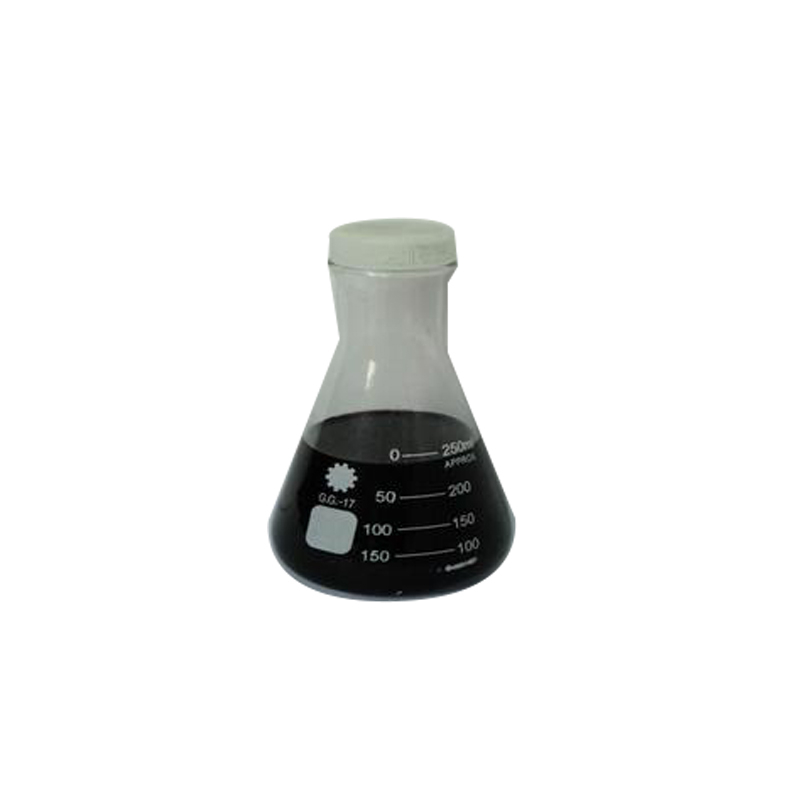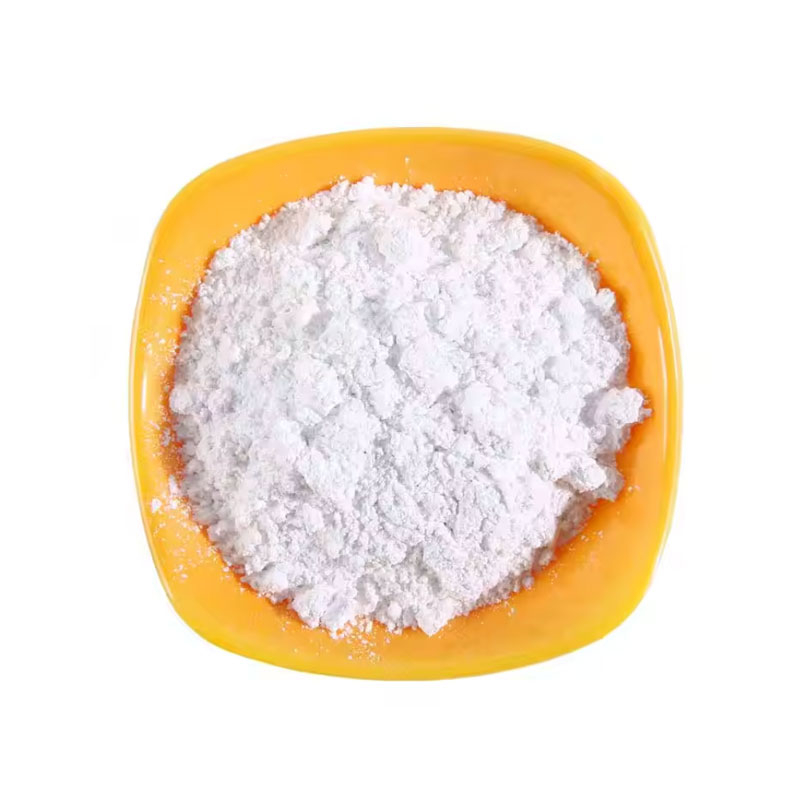Products Description of Ethylenediaminetetraacetic acid tetrasodium salt trihydrate CAS#67401-50-7Tetrasodium EDTA is a white powder that can be used as a hard water softener, a multivalent chelating agent, a fixing solution for bleaching in color photosensitive materials, and an activator for styrene-butadiene rubber.Ethylenediaminetetraacetic acid tetrasodium salt trihydrate Chemical PropertiesMelting point >300° Cstorage temp. Store at room temperaturesolubility Soluble in water.form powdercolor WhitePH10.0 to 12.0(5 g/L, 25 deg-C)CAS DataBase Reference67401
Contact Now
Products Description of Bis-phosphonic acid tetrasodium salt CAS#3794-83-0This product is a brown-yellow viscous liquid. Relative density (20°C) 1.40. Pure product melting point 198-199°C, soluble in water and ethanol.
Contact Now
EDTA-4Na CAS#67401-50-7Overview:EDTA-4Na, with the chemical formula C10H19N2NaO9 and CAS number 67401-50-7, is a widely recognized chelating agent known as edta4na or 4na edta.
Contact Now
Products Description of Adenosine5'-(tetrahydrogen triphosphate), disodiuM salt, trihydrate (9CI) CAS#51963-61-2 This product is white crystal or off-white powder, odorless, slightly sour, and hygroscopic. It is easily soluble in water and very slightly soluble in ethanol, ether, chloroform and benzene. It is relatively stable in alkaline solutions and easily decomposed in acidic and neutral solutions.
Contact Now
Products Description of Formaldehyde CAS#50-00-0Formaldehyde is the simplest aldehyde molecule with active chemical properties and certain toxicity. At room temperature, it is a colorless gas with a pungent odor, which easily undergoes polymerization to form polyformaldehyde. Formaldehyde is easily soluble in water, alcohol and other organic solvents.
Contact Now
Products Description of Ferric ammonium oxalate trihydrate CAS#13268-42-3Calcium and magnesium precipitants, electroplating industryFerric ammonium oxalate trihydrate Chemical PropertiesMelting point 161°C (rough estimate)density 1,78 g/cm3solubility very soluble in H2O; insoluble in ethanolform Crystalline Powdercolor GreenWater Solubility Very soluble in water. Insoluble in alcoholSensitive Light Sensitive & HygroscopicMerck 14,517Exposure limitsACGIH: TWA 1 mg/m3NIOSH: TWA 1 mg/m3Stability:May decompose upon exposure to light.
Contact Now
Products Description of Benzenesulfinic Acid Sodium Salt CAS#873-55-2Benzenesulfinic Acid Sodium Salt is white crystal or white powder with a melting point of 300°C. It is stable at room temperature and pressure and avoids contact with oxides.
Contact Now
Products Description of Boric acid CAS#11113-50-1Boric acid is also called "orthoboric acid". It is derived from the interaction between natural borax (sodium borate) and acid. Soluble in water, ethanol and glycerin. The aqueous solution is acidic and is a monovalent weak acid. Solubility in water increases with temperature. Heated to 169℃ (±1℃), dehydration will produce metaboric acid, and 300℃ will form boric anhydride. Neutralize with strong base to obtain metaborate.
Contact Now
Products Description of Lead acetate trihydrate CAS#6080-56-4 Lead acetate trihydrate is colorless crystal, white granule or powder, which is deliquescent. It is easily soluble in water and has a sweet taste.
Contact Now
Salicylic acid CAS# 69-72-7Salicylic acid is an important organic synthetic raw material, widely used in medicine, pesticides, dyes, rubber, food and perfume fields. In the pharmaceutical industry, the main pharmaceutical products of salicylic acid are sodium salicylate, Holly oil (methyl salicylate), aspirin (acetylsalicylic acid), salicylic acid amine, phenyl salicylic acid.
Contact Now
Products Description of D(+)-Glucose CAS#50-99-7Glucose is a six-carbon sugar containing an aldehyde group with a molecular formula of C6H12O6. It is the most important monosaccharide in living organisms. Its main function is to provide energy required for physiological activities of the body. It is known that the complete oxidation of 1 mol of glucose releases energy of 2870kJ (686kCal), accounting for 70% to 80% of the total energy required by the body.
Contact Now
Products Description of L-Threonic acid magnesium salt CAS#778571-57-6Magnesium L-threonate (MgT, pronounced "Mag T") is a chemical substance discovered by Professor Liu Guosong and a team from Tsinghua University and MIT.L-Threonic acid magnesium salt Chemical Propertiesstorage temp. Inert atmosphere,Room TemperatureInChIInChI=1S/2C4H8O5.Mg/c2*5-1-2(6)3(7)4(8)9;/h2*2-3,5-7H,1H2,(H,8,9);/q;;+2/p-2InChIKeyYVJOHOWNFPQSPP-UHFFFAOYSA-LSMILESC(C1=O[Mg+2]2(O=C(C(O)C(O)CO)[O-]2)[O-]1)(O)C(O)COProduct Application of L-Threonic acid magnesium salt CAS#778571-57-6Magnesium, as a
Contact Now
Products Description of D-(-)-ERYTHROSE CAS#583-50-6D-erythrose-4-phosphate is an intermediate in the enzymatic conversion of carbohydrates.D-(-)-ERYTHROSE Chemical PropertiesMelting point <25℃Boiling point 144.07°C (rough estimate)alpha D20 +1° -14.5° (3 days, c = 11)density 1.0500 (rough estimate)refractive index 1.498storage temp. 2-8°Csolubility Methanol, Waterform syruppka12.49±0.20(Predicted)color light yellowWater Solubility Fully miscible in water.Sensitive HygroscopicMerck 14,3690BRN 1721698CAS DataBase Reference
Contact Now
Products Description of Naphthalene-2-sulfonic acid CAS#120-18-3White to slightly brown leaf-shaped crystals. Melting point 91℃ (anhydrous), 83℃ (trihydrate), 124℃ (monohydrate). Soluble in water, alcohol and ether.
Contact Now
Products Description of Dioctyl Sulfosuccinate Sodium Salt CAS#577-11-7Docusate sodium, used to treat constipation, is used as a laxative or stool softener.
Contact Now
Products Description of Cobalt bis(2-ethylhexanoate)CAS#136-52-7Purple liquid.Cobalt bis(2-ethylhexanoate) Chemical Propertiesdensity 1.002 g/mL at 25 °Cvapor pressure 5Pa at 25℃Fp 104 °Fform liquidcolor purpleWater Solubility 40.3g/L at 20℃CAS DataBase Reference136-52-7(CAS DataBase Reference)EPA Substance Registry SystemHexanoic acid, 2-ethyl-, cobalt(2+) salt (136-52-7)Safety InformationHazard Codes Xn,NRisk Statements 10-36/37/38-40-43-66-65-62-50/53Safety Statements 26-36/37-62-61RIDADR UN 1268 3/PG 3WGK Germany&nb
Contact Now
Products Description of Guanidinehydrochloride99.5% CAS#50-01-1Guanidine hydrochloride, chemical name is carbamidine hydrochloride, is a white or slightly yellow block, almost insoluble in acetone, benzene and ether. It can be used as an intermediate for medicines, pesticides, dyes and other organic synthesis. It is an important raw material for the manufacture of sulfadiazine, sulfamethylpyrimidine, sulfadimethylpyrimidine and other drugs and folic acid.
Contact Now
Taurine Powder CAS# 107-35-7Alanine (107-35-7) is an organic compound widely found in animal tissues. It is a sulfur-containing amino acid, but is not used in protein synthesis. It is rich in brains, breasts, gallbladder and kidneys. It is an essential amino acid for human preterm and newborn babies.
Contact Now
Asphalt, Sulfonated, Odium Salt CAS#68201-32-1In drilling fluid, it can inhibit shale hydration and expansion, prevent shale from exfoliation and collapse, stabilize the well wall, and improve plugging effect. It can improve the performance of drilling fluid and ensure the smooth progress of drilling operations.
Contact Now
Products Description of P-Phenylenediamine CAS#106-50-3 p-Phenylenediamine, also known as Urs D, is one of the simplest aromatic diamines. The pure product is white to light purple crystals, which turn purple or dark brown when exposed to air. It is slightly soluble in cold water, soluble in ethanol, ether, chloroform and benzene.It can be used to make azo dyes, high molecular polymers, fur dyes, rubber antioxidants and photo developers.
Contact Now
Glacial Acetic Acid CAS# 64-19-7Product Overview:Glacial acetic acid, scientifically known as ethanoic acid, is a colorless, corrosive liquid that plays a pivotal role in various industrial processes. With the chemical formula CH₃COOH and the unique identifier CAS#64-19-7, it is a versatile compound that is widely recognized for its effectiveness in a multitude of applications.Market Relevance:In the dynamic industrial sector, the demand for high-quality chemicals is ever-increasing.
Contact Now
Products Description of CALCIUM TITANATE CAS#12049-50-2Calcium titanate is an inorganic substance with the chemical formula CaTiO3. It belongs to the cubic crystal system and is a basic inorganic dielectric material with excellent dielectric, temperature, mechanical and optical properties.
Contact Now
Products Description of EDTA CAS#60-00-4Ethylenediamine can be obtained by cyclizing ethylenediaminetetraacetic acid with formamide. This is a drug primarily used to treat psoriasis, also known as psoriasis. But as an organic synthesis intermediate, it is not the main use of EDTA. EDTA and its salts can undergo complex reactions with a variety of metal ions to form a stable cyclic structure, which can effectively reduce or inhibit side reactions or harmful effects caused by metal ions.
Contact Now
Products Description of ATP Disodium Salt CAS#987-65-5DISODIUM ADENOSINE TRIPHOSPHATE, alias: 5'-adenosine triphosphate disodium salt. Adenosine triphosphate disodium is mainly used as a skin conditioner in cosmetics and skin care products.
Contact Now

































